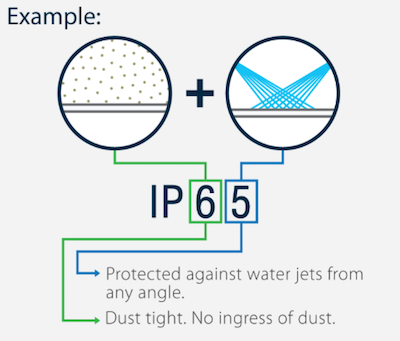When upgrading to LED’s for your business or warehouse, there are many factors to consider: cost, savings over time, the environment, worker safety, and more. Upgrading your business may seem complicated, but learning about LED lighting and knowing how to choose the right lighting will pay in the long run. You may have encountered different ratings and listings for LED lighting, and this article will help you and your business to make sense of these unfamiliar terms.
DLC Standard and Premium Ratings
Many commercial LED products have been certified by the Design Lights Consortium, a non-profit dedicated to optimizing lighting while reducing impact on people and the environment. The DLC only focuses on commercial LED lighting products, and offers standard quality ratings and premium quality ratings.
All DLC ratings include a minimum light output (in lumens) which vary depending on the product. Premium-rated products must put out at least 15 lumens over the standard products. All products must also pass an efficacy requirement (lumens achieved per Watt) which varies per product. Premium ratings require at least 15 lumens per Watt more than the standard rating.
Regardless of rating, all DLC-approved products must be capable of dimming. Premium products must have the option for integral controls, making them ideal for large businesses such as warehouses. Only retrofit kits and luminaries can receive premium DLC ratings.
Energy Star Ratings
Energy Star ratings are familiar and though they’re typically used for residential lighting, a few commercial LED products can receive these ratings for energy efficiency as well. These include accent lights and recessed downlights. Commercial LED products with an Energy Star rating have been tested for
Commercial buildings, however, can receive Energy Star ratings for being efficient without sacrificing quality, and LED lighting can help you as a business owner to achieve this. These standards are set by the EPA and certification happens once per year. Energy Star scores range from 1-100, with 75 or above meaning that a building is top of the line when it comes to energy efficiency.
L70 Ratings
The L70 rating for an LED can help you determine how often you should change your lighting in your facility. This in turn can help you to calculate your long-term cost of upgrading to LED’s.
The L70 rating will tell you how long you should expect an LED light to “live” before the lumens it gives off drops to 70% of its full potential. This is considered the length of its useful life. This rating is typically measured in hours.
IP Ratings
IP Ratings, or Ingress Protection Ratings, can tell you how well your LED lighting will stand up against hazards such as water and dust.
This rating can help you choose lighting based on the conditions inside your facility and can help you cut down maintenance costs in the long run. Buildings with more dust and moisture will benefit from LED’s with a higher IP rating.
IP ratings range from IP40 (lights designed to go inside fully enclosed and protected fixtures) to IP67 which offers complete protection against water and dust. These lights can be up to a full meter underwater without suffering any damage.
C1D1 and CID2 Ratings
Safety is always a concern in every facility, and you are likely familiar with CID1 and CID2 ratings, which indicate the presence where flammable gases could (or are) present.
LED lighting products with these ratings mean that they’re safe to use in these locations. A CID1 rating means that an LED can be used in CID1 locations (where flammable gases may be present) and a CID2 rating means that an LED can be safely used in a CID2 location (where such vapors are known to be present.)
NSF Ratings
Sometimes, LED lighting will be used in a facility where food prep or handling takes place. It’s important for lighting to prevent bacteria buildup and enhance the safety of both the food and the employees, and NSF-rated lighting must be shatterproof to avoid any broken glass in food. These lights are certified by the National Sanitation Foundation and is a requirement where LED lighting is used to aid in food preparation.
IDA and BUG Ratings
Reducing light pollution is a vital role for every business owner to play. A BUG (Backlight, Uplight, and Glare) rating can help your business choose lighting in a way to minimize light pollution that can be hazardous to people and wildlife alike.
The IDA (International Darksky Association) helped to develop the BUG rating which tells how much extra light escapes from a fixture during nighttime hours. The scale for lighting zones ranges from LZ0 (no light) to LZ4 (very high lighting.) This means that in a LZ0 zone, only lights with very low BUG ratings can be used, and in LZ4 zones, higher ratings can be tolerated.
If you are ready to take your company’s cost savings to the next level, contact us at Relumination today to get started.

